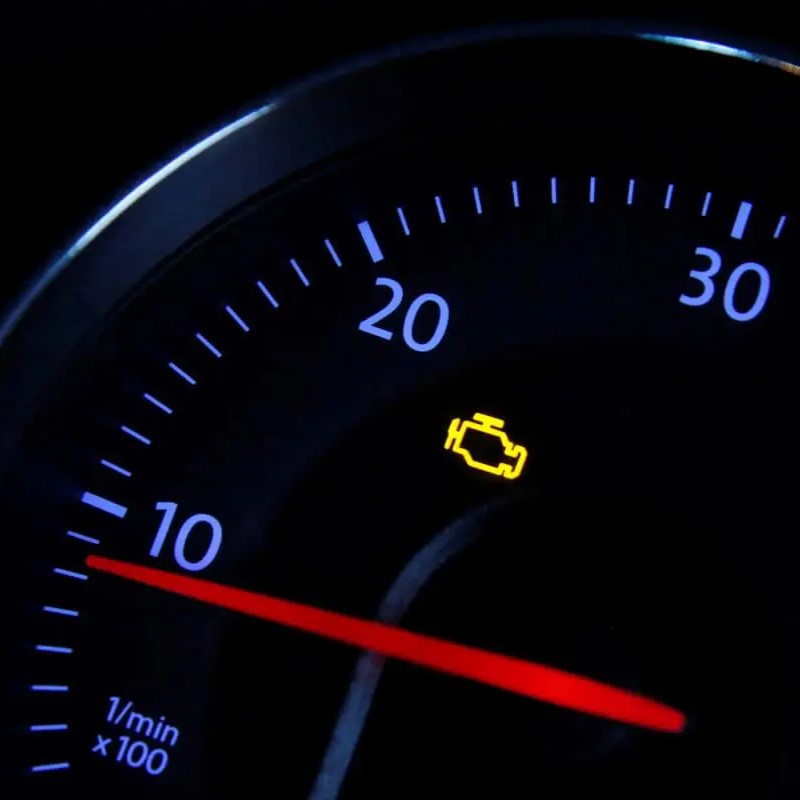Your car’s dashboard is a sea of lights and symbols, each one conveying vital information about the vehicle’s health. Among these, the temperature light is arguably one of the most critical. Ignoring it can have serious consequences, so understanding what it means and how to react is essential for any driver.
What Does the Temperature Light Indicate?
The temperature light, typically red or blue, serves as a warning signal for your engine’s coolant temperature. When the engine runs, it generates heat. This heat needs to be regulated to prevent overheating, which can cause significant damage to internal components. The coolant system plays a crucial role in this process. Coolant absorbs heat from the engine and carries it to the radiator, where it dissipates into the air.
Normally, the temperature light remains off. However, if the engine starts to overheat, the light will illuminate, alerting you to a potential problem. There are two main scenarios this light can represent:
Overheating (Red Light):
This is the more common and concerning situation. A red temperature light signifies that the engine coolant is exceeding its normal operating temperature. If left unchecked, this overheating can lead to warped cylinder heads, blown head gaskets, and even complete engine failure.
Coolant Running Too Cold (Blue Light):
Less frequent but still important, a blue temperature light might appear. This indicates that the engine coolant is too cold, which can affect fuel efficiency and engine performance. While not as critical as overheating, it’s still advisable to address the cause.

What Causes the Temperature Light to Turn On?
Several factors can contribute to a lit temperature light, particularly the red overheating warning. Here are some of the most common culprits:
-
Low Coolant Level: Coolant plays a vital role in heat transfer. If the coolant level is low due to leaks or neglect, it won’t be able to absorb enough heat, leading to overheating.
-
Faulty Thermostat: The thermostat regulates coolant flow within the engine. If it malfunctions and gets stuck closed, coolant circulation is hampered, causing the engine to overheat.
-
Malfunctioning Cooling Fan: The radiator fan plays a crucial role in dissipating heat. If the fan is damaged or its electrical connection is faulty, it won’t draw air through the radiator effectively, leading to overheating.
-
Water Pump Failure: The water pump is responsible for circulating coolant throughout the system. If it fails, coolant movement is restricted, and the engine will overheat.
-
Blocked Radiator: Over time, the radiator fins can become clogged with debris, reducing their ability to release heat. This blockage can also trigger the temperature light.

What to Do When the Temperature Light Comes On (Red Light)
If you see the red temperature light illuminate on your dashboard, here are the steps you should take immediately:
-
Pull Over Safely: Don’t ignore the warning. Find a safe location to pull over as soon as possible and turn off the engine. Continuing to drive can cause severe damage.
-
Turn on the Heater (Optional): This might seem counterintuitive, but turning on the heater can help draw some heat away from the engine in a limited way. However, prioritize your safety over this step.
-
Let the Engine Cool Down: Don’t attempt to open the radiator cap immediately. The coolant can be extremely hot and could cause serious burns. Allow the engine to cool for at least 20-30 minutes before proceeding.
-
Check Coolant Level: Once the engine has cooled down somewhat, carefully pop the hood open. Locate the coolant reservoir and check the level. If it’s low, don’t add coolant just yet. A low level could indicate a leak.
-
Visually Inspect for Leaks: Look around the engine bay for any signs of coolant leaks. Leaks might appear as puddles or drips, and the coolant itself is usually a green, yellow, or orange color.
-
Seek Professional Help: If the coolant level is low and you suspect a leak, or if you’re unsure about the cause of the overheating, don’t hesitate to call a tow truck and have your car towed to a mechanic for a proper diagnosis and repair.

Preventing Temperature Light Issues
The good news is that there are proactive steps you can take to minimize the risk of your temperature light ever coming on:
-
Regular Coolant Maintenance: Schedule regular coolant flushes and check the coolant level periodically, typically during routine oil changes.
-
Inspect the Cooling System: During routine maintenance checks, ask your mechanic to inspect the cooling system components like the thermostat, water pump, and radiator hoses for signs of wear and tear.
-
Watch the Temperature Gauge: Most cars have a temperature gauge on the dashboard. While the light serves as a critical warning, keeping an eye on the temperature gauge on your dashboard can help you identify potential overheating issues before the light even turns on. A rising temperature gauge can be a precursor to overheating, allowing you to take preventive measures like turning on the heater or pulling over to let the engine cool slightly.
-
Don’t Skip Warning Signs: Be mindful of other symptoms that might indicate engine overheating, such as a burning smell, excessive white smoke coming from the hood, or the engine losing power. These signs, in conjunction with the temperature light, further emphasize the need to pull over and address the issue.
-
Use the Correct Coolant: Always use the coolant type recommended by your car manufacturer. Different coolants have varying freezing and boiling points, and using the wrong one can affect the system’s efficiency.

Additional Tips:
- Carrying a jug of coolant in your car can be helpful in a pinch if you encounter a low coolant level on the road. However, this is a temporary solution, and a proper inspection for leaks is still crucial.
- In extremely hot weather conditions, be extra vigilant and take steps like avoiding strenuous driving situations that put additional strain on the engine.
Remember, a little awareness and proactive maintenance can go a long way in preventing overheating issues and keeping your car on the road.

The temperature light is a vital warning system in your car, alerting you to potential engine overheating. Understanding what it signifies and how to react appropriately can save you from costly repairs and potential breakdowns. By following these tips and performing preventative maintenance, you can ensure your car stays cool and runs smoothly for miles to come.





